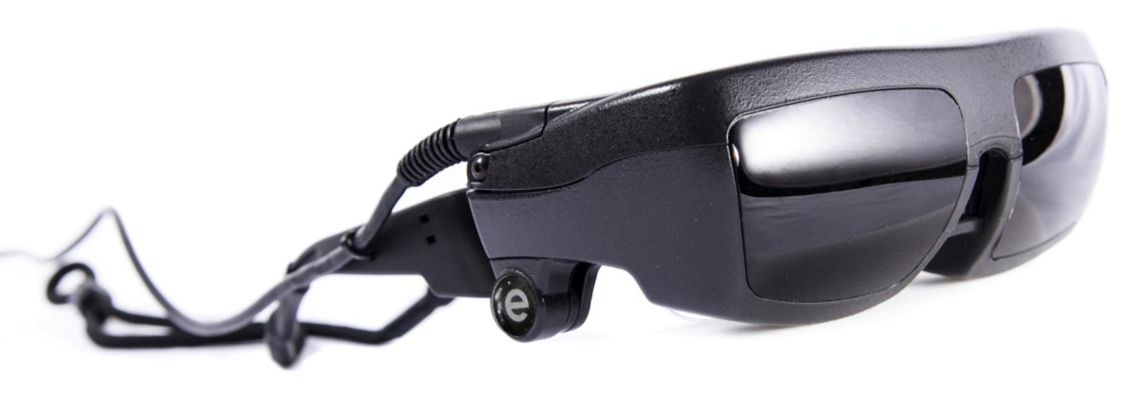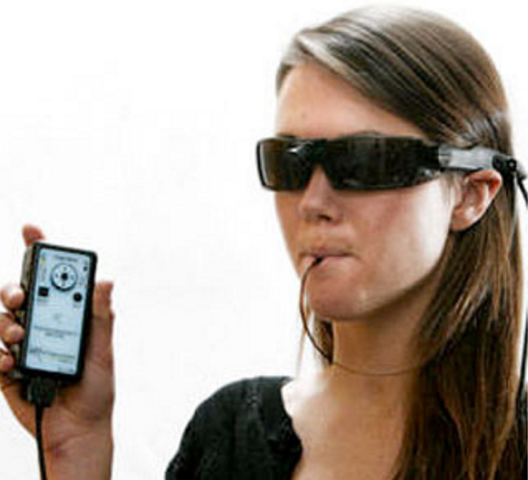Vision loss is life-changing for affected individuals and their families, but until recently it was often permanent. Recent technological advances, including specialized eyeglasses and implanted chips, have revolutionized the treatment of patients with certain types of blindness by restoring sight.
eSight Eyewear by Esight Corporation
 eSight eyeglasses are designed to help people with partial blindness or visual impairment see. It is a nonsurgical, wearable, hands-free, portable device. It uses a high-speed camera to capture a live video stream of everything that the wearer is looking at. The video is sent to a computer that uses proprietary software to process every pixel of the data. The computer then sends enhanced video back to the headset, which displays the data on two LED screens located right in front of the user’s eyes. Most users can visualize the enhanced images with a high level of visual clarity. The processing happens in real-time, and there is no obvious lag to the wearer. Users can use eSight for long, near, and midrange vision, and can also adjust the brightness, contrast, color, and magnification of the images.
eSight eyeglasses are designed to help people with partial blindness or visual impairment see. It is a nonsurgical, wearable, hands-free, portable device. It uses a high-speed camera to capture a live video stream of everything that the wearer is looking at. The video is sent to a computer that uses proprietary software to process every pixel of the data. The computer then sends enhanced video back to the headset, which displays the data on two LED screens located right in front of the user’s eyes. Most users can visualize the enhanced images with a high level of visual clarity. The processing happens in real-time, and there is no obvious lag to the wearer. Users can use eSight for long, near, and midrange vision, and can also adjust the brightness, contrast, color, and magnification of the images.
BrainPort V100 by Wicab Technologies
 BrainPort V100 consists of a video camera mounted on a pair of sunglasses, an electrode array that sits on the tongue, two rechargeable lithium batteries, and a hand-held controller. The glasses are connected to the tongue array, which contains 400 electrodes, by a flexible cable. White and gray pixels from the camera are felt on the tongue as strong and medium levels of stimulation, respectively. BrainPort users describe the sensation as pictures painted on their tongue with tiny bubbles. The impulses felt on the tongue are transmitted to the brain, which can interpret the data as visual images. Users can adjust parameters such as the stimulation, contrast, and zoom using the hand-held controller.
BrainPort V100 consists of a video camera mounted on a pair of sunglasses, an electrode array that sits on the tongue, two rechargeable lithium batteries, and a hand-held controller. The glasses are connected to the tongue array, which contains 400 electrodes, by a flexible cable. White and gray pixels from the camera are felt on the tongue as strong and medium levels of stimulation, respectively. BrainPort users describe the sensation as pictures painted on their tongue with tiny bubbles. The impulses felt on the tongue are transmitted to the brain, which can interpret the data as visual images. Users can adjust parameters such as the stimulation, contrast, and zoom using the hand-held controller.
Alpha IMS Implant by Retina Implant AG
 Alpha IMS uses retinal implant technology to help restore vision in patients with retinitis pigmentosa. The device is a small microchip containing 1500 electrodes that is implanted behind the retina to replace lost or damaged photoreceptors in the eye. It produces pulsed, light-dependent electrical stimuli to replace the normal optimal stimuli. Although patients are not able to visualize objects sharply, they can locate physical objects and light sources.
Alpha IMS uses retinal implant technology to help restore vision in patients with retinitis pigmentosa. The device is a small microchip containing 1500 electrodes that is implanted behind the retina to replace lost or damaged photoreceptors in the eye. It produces pulsed, light-dependent electrical stimuli to replace the normal optimal stimuli. Although patients are not able to visualize objects sharply, they can locate physical objects and light sources.